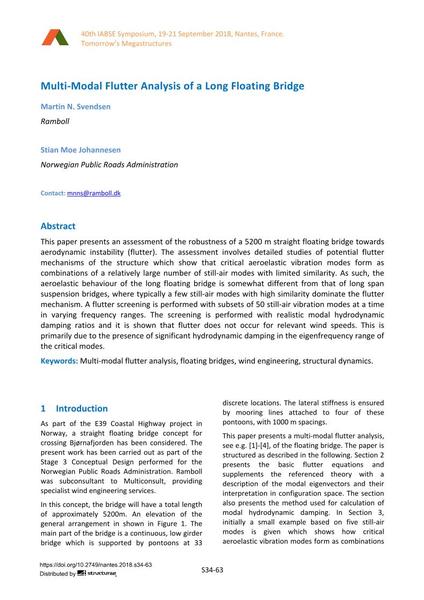Multi-Modal Flutter Analysis of a Long Floating Bridge

|
|
|||||||||||
Détails bibliographiques
| Auteur(s): |
Martin N. Svendsen
(Ramboll)
Stian Moe Johannesen (Norwegian Public Roads Administration) |
||||
|---|---|---|---|---|---|
| Médium: | papier de conférence | ||||
| Langue(s): | anglais | ||||
| Conférence: | IABSE Symposium: Tomorrow’s Megastructures, Nantes, France, 19-21 September 2018 | ||||
| Publié dans: | IABSE Symposium Nantes 2018 | ||||
|
|||||
| Page(s): | S34-63 | ||||
| Nombre total de pages (du PDF): | 8 | ||||
| DOI: | 10.2749/nantes.2018.s34-63 | ||||
| Abstrait: |
This paper presents an assessment of the robustness of a 5200 m straight floating bridge towards aerodynamic instability (flutter). The assessment involves detailed studies of potential flutter mechanisms of the structure which show that critical aeroelastic vibration modes form as combinations of a relatively large number of still-air modes with limited similarity. As such, the aeroelastic behaviour of the long floating bridge is somewhat different from that of long span suspension bridges, where typically a few still-air modes with high similarity dominate the flutter mechanism. A flutter screening is performed with subsets of 50 still-air vibration modes at a time in varying frequency ranges. The screening is performed with realistic modal hydrodynamic damping ratios and it is shown that flutter does not occur for relevant wind speeds. This is primarily due to the presence of significant hydrodynamic damping in the eigenfrequency range of the critical modes. |
||||
